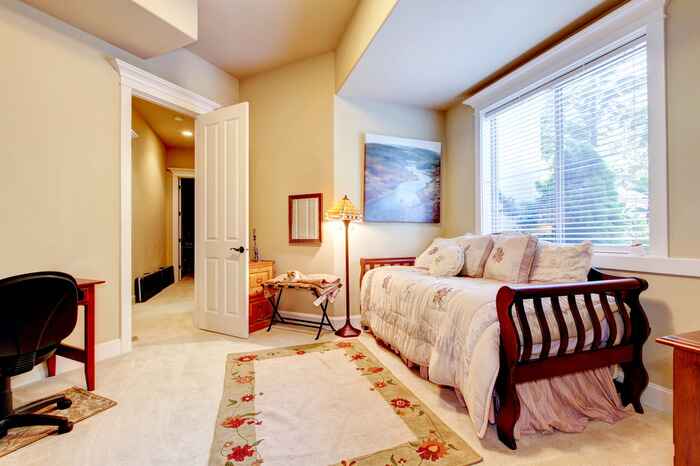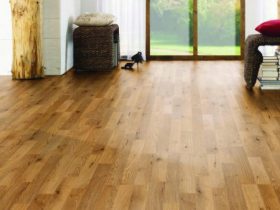Not everyone has the luxury of vast open spaces, but even the smallest interiors can feel light, airy, and expansive with the right design choices. Whether you’re working with a compact city apartment, a narrow hallway, or a cozy living room, strategic styling can make all the difference.
By carefully selecting colors, furniture, lighting, and décor, you can create the illusion of more space—without knocking down walls.
Here’s a comprehensive guide on how to transform a small interior into a visually larger and more functional space.
1. Use Light Colors to Open Up the Room
Color has a significant impact on how we perceive space. Light hues reflect more natural and artificial light, making a room feel brighter and more open.
Best Color Choices for Small Spaces:
- Whites and off-whites: These enhance brightness and provide a neutral base.
- Soft pastels: Shades like pale blue, blush pink, and mint green add a hint of color without overwhelming the space.
- Light grays and beiges: Perfect for creating a modern, airy feel while keeping the room warm.
Avoid dark colors on large surfaces as they tend to absorb light, making a space feel more enclosed. However, using darker shades in smaller accents—such as cushions, artwork, or furniture legs—can add depth without compromising openness.
2. Incorporate Mirrors to Expand the Space
Mirrors are one of the most effective tools for visually enlarging a small interior. They reflect both natural and artificial light, making a space feel twice as large and significantly brighter.
How to Use Mirrors Effectively:
- Place a large mirror opposite a window: This maximizes natural light and brings the outdoors in.
- Use full-length mirrors: Positioning them against a wall or behind furniture can create the illusion of extra depth.
- Install mirrored splashbacks: In smaller kitchens and bathrooms, mirrored splashbacks reflect light and give the illusion of a more open space.
- Group multiple small mirrors: This can act as a feature wall while serving a functional purpose.
3. Choose Multi-Functional and Streamlined Furniture
Bulky furniture can overwhelm a small space, but opting for multi-functional and sleek pieces can help create an airy feel.
Smart Furniture Choices:
- Floating shelves: These provide storage without taking up valuable floor space.
- Glass or acrylic furniture: Transparent materials give the impression of openness by allowing light to pass through.
- Wall-mounted desks and foldable tables: Ideal for compact workspaces and dining areas.
- Sofas and beds with storage compartments: Maximizes functionality without cluttering the room.
- Legged furniture: Pieces with exposed legs create visual space underneath, making the room feel more open.
4. Maximize Natural Light
Natural light is one of the best ways to make a room feel larger. The more daylight you allow in, the more spacious the area will appear.
Ways to Enhance Natural Light:
- Use sheer curtains instead of heavy drapes to let in more light.
- Opt for light-colored window treatments to maintain an open and airy feel.
- Keep windows free from obstructions such as large furniture or dark roller blinds.
- Choose glossy or reflective surfaces for walls and furniture to bounce light around the room.
If natural light is limited, mimic its effect with warm-toned artificial lighting.
5. Layer Your Lighting for Depth
Lighting plays a crucial role in creating an illusion of space. A well-lit room feels more open, while shadows and dim lighting can make a space seem smaller.
Effective Lighting Strategies:
- Use a combination of ambient, task, and accent lighting to prevent harsh shadows.
- Opt for recessed lighting in ceilings to avoid bulky fixtures in small rooms.
- Add LED strip lighting under cabinets, shelves, or behind mirrors to create depth.
- Use wall sconces or pendant lights instead of table lamps to free up surface space.
6. Keep Clutter to a Minimum
Nothing makes a space feel smaller than unnecessary clutter. A clean, well-organized room instantly feels more spacious and inviting.
Decluttering Tips:
- Adopt a minimalist mindset: Keep only essential items and remove unnecessary décor.
- Use stylish storage solutions: Woven baskets, hidden compartments, and modular shelving help keep everything tidy.
- Store items vertically: Tall shelving units or stackable storage make use of height rather than floor space.
- Follow the “one in, one out” rule: If you buy anything new, remove an old item to maintain balance.
7. Use Vertical Space Wisely
When floor space is limited, think upwards. Utilizing vertical space not only increases storage potential but also draws the eye upwards, making ceilings appear higher.
Vertical Storage Ideas:
- Install tall bookshelves instead of wide ones.
- Use hanging planters instead of bulky pots.
- Mount cabinets or floating storage units to keep floors clear.
- Opt for floor-to-ceiling curtains to elongate the room visually.
8. Play with Scale and Proportion
Selecting furniture and décor that match the proportions of your space prevents overcrowding. Too many small pieces can make a room feel cluttered, while oversized items can dominate the space.
How to Maintain Balance:
- Use one or two statement pieces (such as a large artwork or a bold chair) to create a focal point.
- Mix different furniture heights to add visual interest without overcrowding.
- Avoid oversized rugs in small rooms—opt for appropriately sized area rugs to define spaces without overwhelming them.
9. Define Spaces with Smart Layouts
Even small spaces benefit from well-defined zones. Creating distinct areas for work, relaxation, and dining makes a room feel organised and intentional.
Space-Zoning Techniques:
- Use rugs to define different areas within an open-plan space.
- Position furniture to create natural separations without using walls.
- Use folding screens or open shelving units to subtly divide sections while maintaining light flow.
10. Incorporate Reflective and Metallic Finishes
Shiny and metallic finishes help bounce light, making a room feel more spacious.
Materials That Enhance Space:
- Glass and mirrored accents to reflect light.
- Metallic fixtures and décor such as brass, gold, or chrome to add depth.
- Glossy surfaces for cabinets and furniture to enhance brightness.
Wrapping Up
Creating the illusion of space in smaller interiors is all about smart design choices. From light colors and mirrors to multi-functional furniture and layered lighting, the right strategies can transform a cramped room into a stylish, spacious haven.
By incorporating the above strategies and techniques, you can maximize every inch of your interior. With a thoughtful approach, even the smallest space can feel expansive, welcoming, and beautifully designed.











Leave a Review